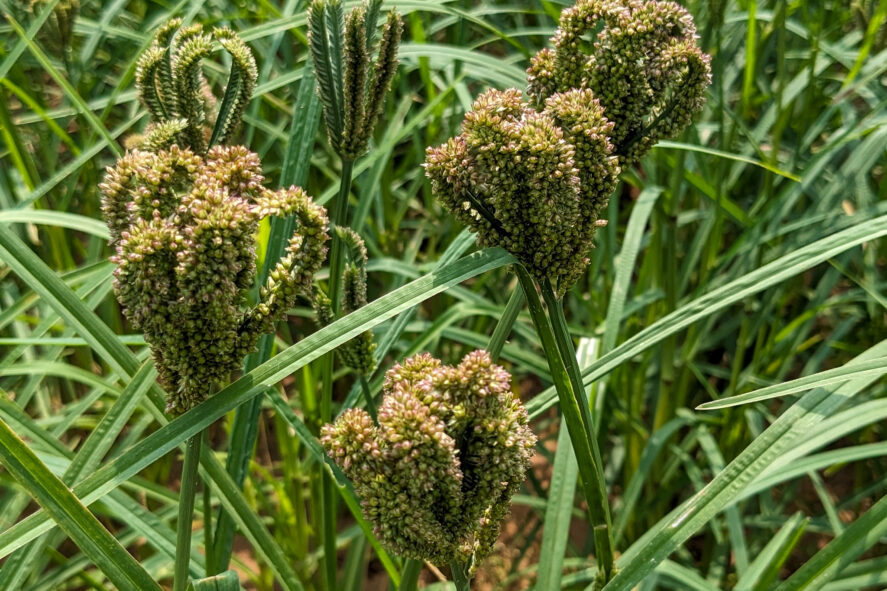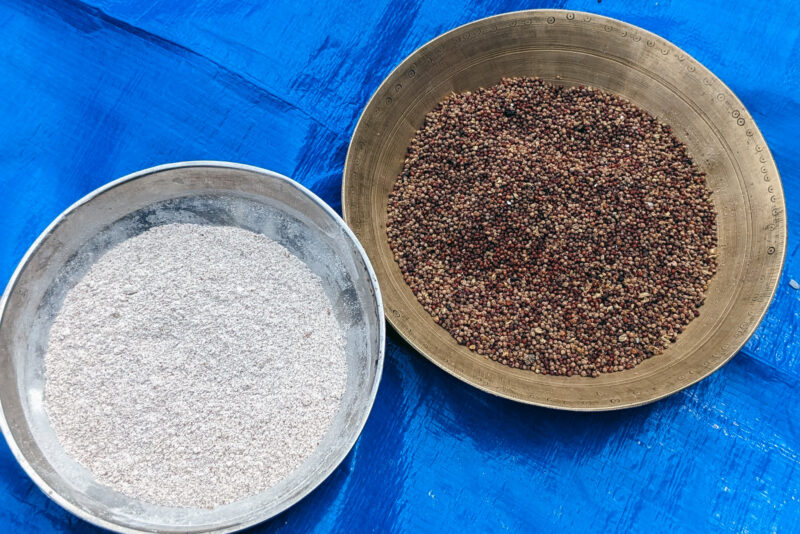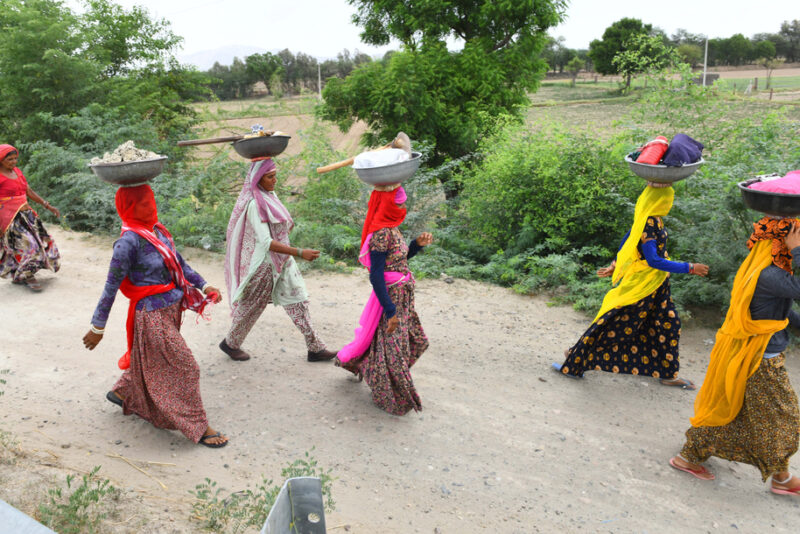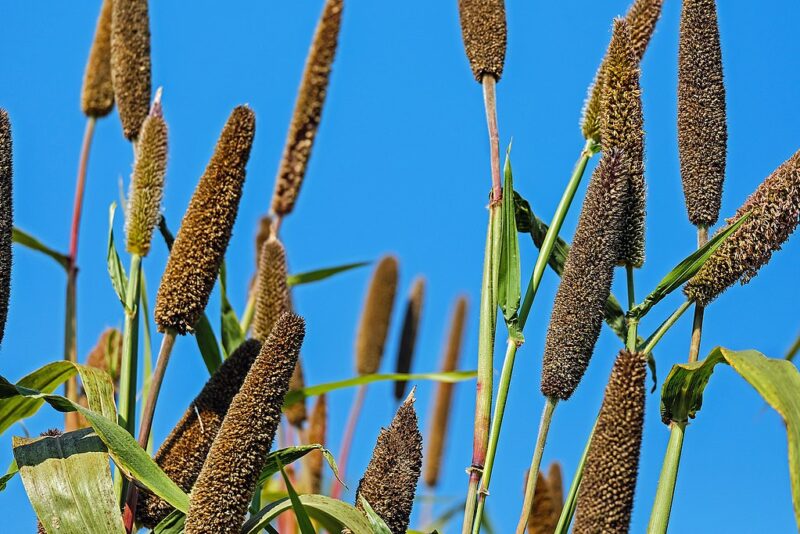Indian Millet Cultivation Plagued by Low Yields, Prices, and Profits

Millets contribute to achieving six of the seventeen Sustainable Development Goals for 2030: zero hunger, good health and well-being, decent work and economic growth, responsible consumption and production, climate change, and life on land. In India, the gradual disappearance of millets from diets has intensified nutritional inadequacies while making cropping patterns unsustainable and increasing the agricultural sector’s susceptibility to the effects of climate change. Comprehensive studies show that reduced calories from millets substantially reduced iron intake without compensation from other food groups. In addition to the nutritional benefits, increasing the land area under these crops can improve nutritional supply and climate resilience while reducing greenhouse gas emissions, irrigation water demand, and energy.
Indian policymakers promoted wheat and paddy to overcome food shortages and achieve self-sufficiency, building an elaborate framework to support their production. As a result, millet cultivation dwindled from 37 m.ha in 1965–66 to 12.5 m.ha in 2020–21, while the area and production of rice and wheat continued to increase. The factors leading to this drastic fall in millet production warrant analysis as India endeavors to promote millet production and consumption to achieve nutritional security, address lifestyle diseases, and mitigate and adapt to climate change.
In our recently published study, we address the research gap in this area by leveraging an extensive database spanning 35 years to analyze farmer profitability, cost of food production, and associated issues related to millets. We found an unacceptably high distortion in inter-crop parity, which led to loss of profitability, increased costs, and lower prices for nutri-cereals. We advocate for providing a level playing field for cultivating climate-resilient millets by following a crop-neutral policy.
Profitability of millet cultivation compared to paddy and wheat
On average, a millet farmer reaps a measly 33% and 42% of what a wheat or a paddy farmer gets for their crops. Cultivators of pearl millet, sorghum, and finger millet receive 33%, 32%, and 8.7% of an average wheat farmer. The net margin over paid-out costs of farmers cultivating millets plummeted in the new millennium (NM) by 30% over the paid-out costs, relative to the previous two-decade average. Cultivating millets increased farmer income by a modest 1.7% per annum compared to a relatively better growth of 2.2% in the case of wheat.
The situation is grimmer if we consider all costs, including imputed values of family labor, rental values of owned land, and interest in working capital. Income from farming could not cover all costs for millet farmers in every alternate year.
The growing cost of food production
The most disturbing finding is that the production costs per quintal have been growing at an annual rate of 1.2% for millets. This can be attributed to the fact that cultivation costs spiked faster than the yields, resulting in costlier food production. The rising cost of production, in turn, would require spikes in support prices, setting off a vicious circle of poverty-accelerating inflation. The long-term trend of decline in the unit cost of production has reversed in all the crops in the latest period, 2001–2015. The rising costs of food production have an adverse impact on consumers’ food prices.
Market woes for millet farmers
The prices realized have been stagnant for millets in the overall study period 1981–2015, despite significant spikes in per quintal cost of production. Minimum support prices (MSPs) have been growing at lower rates than the speed at which the cost of production moves up. The opposite was true in the case of wheat and paddy, in that their MSPs grew faster than the respective production costs. To make things worse, MSPs moved slower than wholesale prices for millets, diametrically opposite to wheat and paddy. Prices realized are lower than costs for most of the years in pearl millet, sorghum, and finger millet.
Determinants of net income for nutri-cereals farmers
According to our analysis, there is scope to increase profitability through the use of manures and fertilizers, pesticides, and machine labor, as they are not currently used to a significant threshold. Among the country’s predominantly millet-cultivating regions, net returns are significantly positive in the southern region, significantly negative in the northern region, and without any tangible difference in the western region. Spending on seeds, irrigation, and hired labor significantly enhances profits in millets.
Policy implications
The unacceptably high distortion in inter-crop parity leading to loss of profitability, lower yields, increased costs, and lower prices for millets has to end through a crop-neutral support policy. Policymakers must apply corrective measures in several aspects, including technologies, prices, input provision, processing, storage, and distributional policies. Including millets in the PDS will kickstart demand initially in states with relatively high consumption, like Rajasthan, Gujarat, Maharashtra, Karnataka, Haryana, and Telangana. Scaling up some of innovative interventions—like the Odisha Millet Mission—across the country can be a game-changer for achieving nutritional security.
It is pertinent here to note that this enhanced nutri-cereal focus should not bypass small millets like Kodo millet, little millet, and others.
Behavior change communication and social marketing help spread health and other benefits of nutri-cereals. The positive and emergent changes in policymaking and consumption patterns, coupled with global commitments, need to consolidate to create a level playing field for millet farmers and consumers.
Chandra S. Nuthalapati is a visiting professor at TCI.
Susanto K. Beero teaches at the Christ Deemed University, Delhi NCR Campus.
Anjani Kumar and Vinay Sonkar work at the International Food Policy Research Institute, South
Asia Office, New Delhi.
Mulla Areef is with the Institute of Economic Growth, New Delhi.
Featured image: Finger millet grows on a farm in Odisha, India. (Photo by Raghav Puri/TCI)





